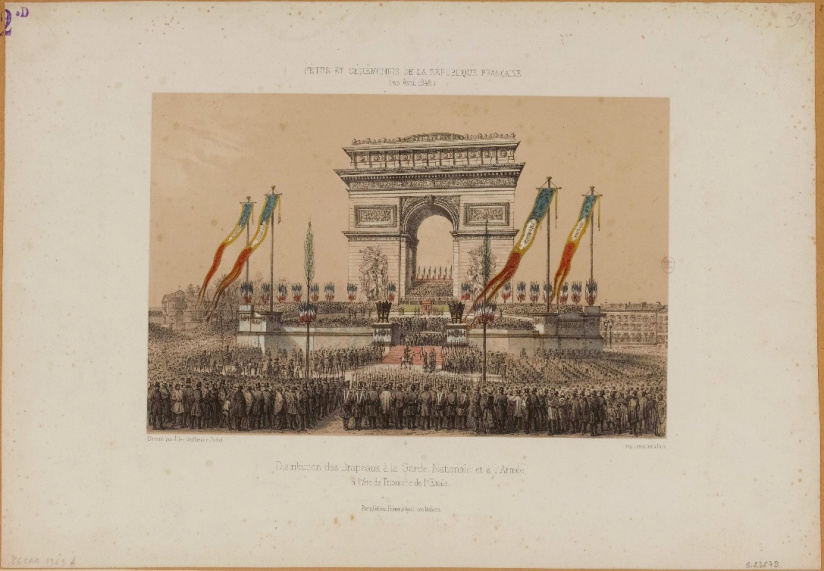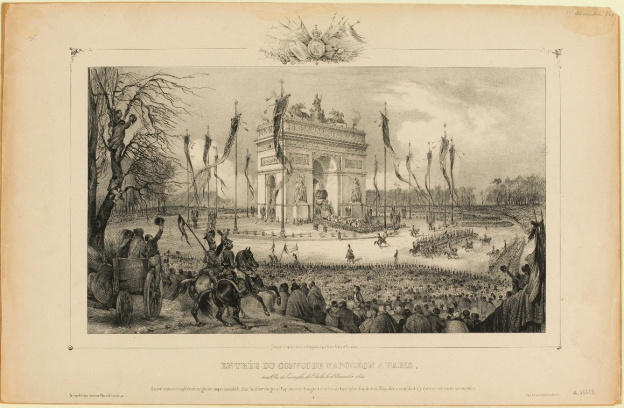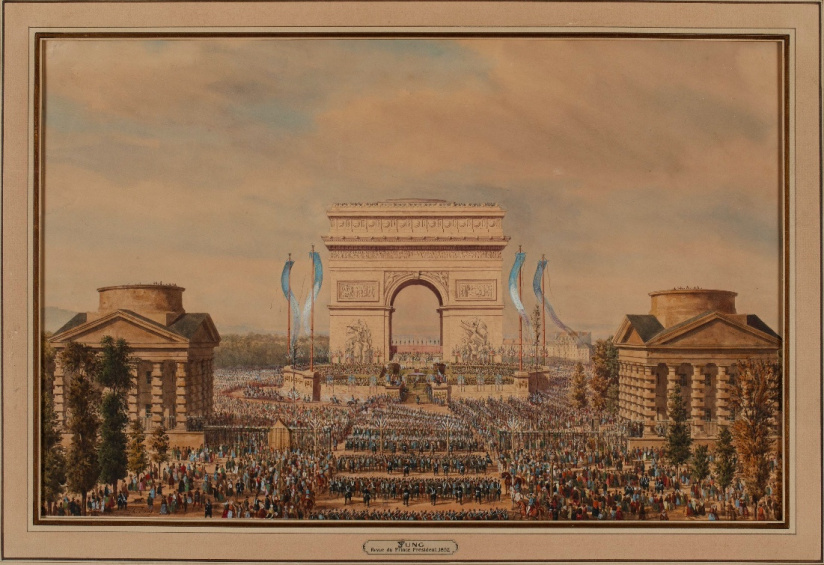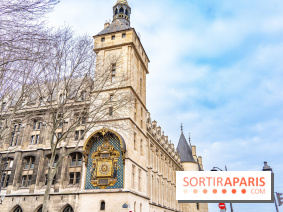On August 15, 1806, the first stone of theArc de Triomphe de l'Etoile was laid. On returning from the battle of Austerlitz, Napoleon 1st promised the soldiers of the French army a triumphal return to the capital, in the vein of the honors accorded to victorious generals and their troops under the Roman Empire, who marched under triumphal arches on their return from battle. " You will only return to your homes under triumphal arches", declared the Emperor.
On February 18, 1806, Napoleon 1st issued an imperial decree ordering the construction of this triumphal arch to perpetuate the memory of the French army's victories. Initially planned "at the entrance to the boulevards, near where the Bastille used to be, so that on entering the Faubourg Saint-Antoine, one would pass under this triumphal arch", it was finally erected on the Place de l'Etoile, offering the edifice excellent views, in line with and at the western end of theAvenue des Champs-Élysées.
Architect Jean-François Chalgrin, who was initially in competition with architect Jean-Arnaud Raymond, drew inspiration for the design of the Parisian monument from theJanus Arch and theArch of Titus in Rome. On August 15, 1806, the first stone, in the shape of a shield, bearing an inscription and covered with a bronze plaque to protect it, was laid on Napoleon 1st's birthday. The event took place without any official ceremony and to general indifference.
In 1810, after four years of work, two of which were devoted solely to the building's foundations, Napoleon commissioned the architect Chalgrin to build a life-size trompe-l'oeil model of the building, using framework, stucco and painted canvas, to give theillusion of the completed monument to mark his marriage to Archduchess Marie-Louise and her entry into Paris.
Under the Restoration, construction of the Arc de Triomphe was interrupted and then abandoned, but resumed during the reign of Louis XVIII, in 1823, under the aegis of architects Louis-Robert Goust and Jean-Nicolas Huyot, to commemorate thevictorious expedition to Spain in April 1823, which restored King Ferdinand VII of Spain to his throne.
In 1830, however, Louis-Philippe reversed Napoleon I's original decision and dedicated the building to the armies that had fought between 1792 and 1815. Architect Guillaume-Abel Blouet was commissioned to continue construction of the arch. Over the years, numerous projects, some of them highly fanciful, were dropped from the monument's design, including a colossal eagle, Napoleon on a sphere, a water tank and an elephant.
The Arc de Triomphe de l'Etoile was inaugurated on July 29, 1836, to mark the sixth anniversary of the Trois Glorieuses. Originally, a grand military review was planned for the inauguration, in the presence of Louis-Philippe. But he was assassinated on June 25, and decided to cancel the ceremony. Instead, a grand banquet hosted by the King for 300 guests was organized, while the monument was gradually unveiled to the participants and the Parisian people.
Location
Arc De Triomphe
Place Charles-de-Gaulle
75008 Paris 8
Access
Charles de Gaule Etoile metro station
More information
Iconographies: François Houiste, Musée Carnavalet Philippe Benoist, Musée Carnavalet Victor Adam, Musée Carnavalet Théodore Jung, Musée Carnavalet



























